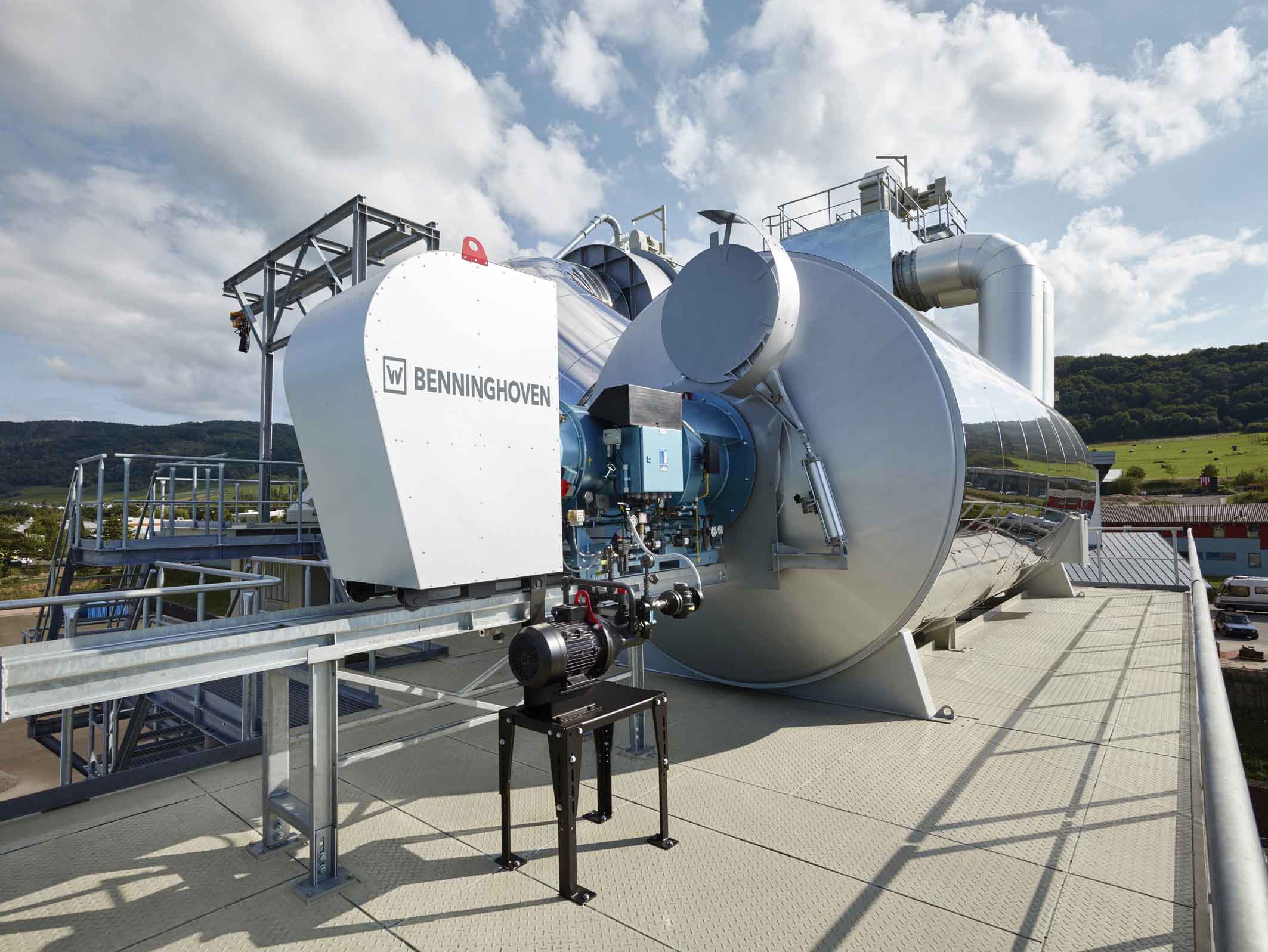
The asphalt industry is continuously looking for better solutions to optimise the processes within asphalt mixing plants.
According to
“But any concept, no matter how good, eventually reaches its limits. This is also the case for heating reclaimed asphalt in a parallel flow process where the material flows in the same direction as the heat generation. The exhaust emissions of this process limit the outflow temperatures to 130°C.”
Benninghoven says that the physical properties of parallel flow drying and the corresponding “negative properties” such as the higher exhaust gas temperature compared to the product temperature as well as the resulting high emission values and the increased energy consumption has prompted it to take a completely new approach.
“The recycling material is now heated in counterflow. That means that the material flows against the heat source in the drum. This achieves higher material temperatures while lowering the exhaust gas temperature.
“The outflow temperature of 160°C corresponds to the further processing temperature while the exhaust temperature is above the dewpoint at about 100°C.” The material no longer has to be run overheated which results in a clear energy reduction. The entire process uses a hot gas generator as direct firing would burn the recycling material and make it unusable.
“The burner supplies the heat energy required for drying and heating the recycling material. It burns into the hot gas generator where the flame is intensively mixed with the circulating air, also in counterflow. The RAP material is heated only indirectly through the hot air: emission values are below the standard range.”
In the drum, the RAP material is heated gently in counterflow across the length of the drum which in turn cools the gases.
Material heated to the final temperature is transported directly into one of the two storage silos, and there it is conveyed across a weighing station and fed into the mixer.
“The cross section of the exhaust hood is large enough to make the exhaust gasses rise up very slowly, taking along the smallest possible amount of fine particles,” says Benninghoven.
“The separated particles drop into a collecting trough and are fed into the drum outlet from there. This maintains the grain composition of the raw material. This process is necessary to reliably maintain the stricter emission values in future as well.”













